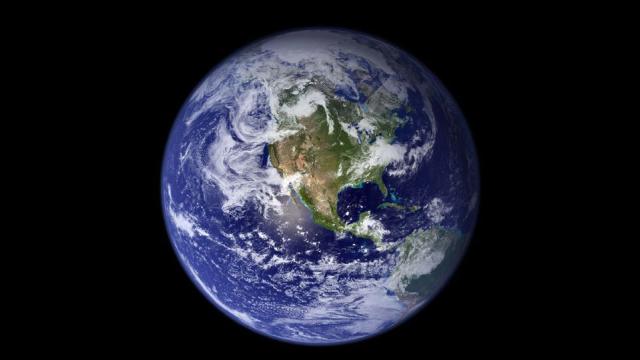This week, an asteroid flew by the Earth, coming as close as 71,362km away. No, you shouldn’t worry about this specific asteroid (anymore, at least), but you might wonder how we missed it.
Tabloids write weekly about the upcoming close asteroid approaches hoping to spook you — but those asteroids are almost always already on our radar, and guaranteed to miss Earth. The asteroid that whizzed by on July 25 was different. It was only discovered this week before coming perhaps a little too close to Earth for comfort.
[referenced url=”https://gizmodo.com.au/2019/07/who-protects-earth-from-asteroids/” thumb=”https://gizmodo.com.au/wp-content/uploads/2019/07/Screen-Shot-2019-07-25-at-12.46.40-pm-410×231.png” title=”Who Protects Earth From Asteroids?” excerpt=”Of all the things that could end our world, an asteroid strike may be the doomsday we have the most control over.”]
A team at the SONEAR Observatory in Brazil first noticed the asteroid on Wednesday local time, and it appeared in another American team’s data later that day, before flying by hours later. The asteroid itself was between 53 and 130m in diameter, or as several astronomers have referred to it, “a city killer”.
It was not a city killer, of course — it didn’t hit a city, and probably would not have hit a city had it hit the Earth. Still, how do you miss something like that?
Well, these asteroids are incredibly faint. Several dozen metres might sound large if it pummels the Earth, but that’s incredibly small on astronomical scales. Even if these rocks eventually get close enough that we can actually detect them, survey telescopes must be looking at the right place in the sky when the blips pass by.
The United States Congress has been pushing NASA to detect and track threatening asteroids. In 1998, the Congress told NASA to find the near-Earth asteroids larger than a kilometre in size within 10 years, and in 2005, expanded that goal to 90 per cent of asteroids that come close to the Earth at least 140m in size.
The world’s asteroid-finding infrastructure isn’t able to complete even the 140m goal, according to a National Academies report released earlier this year. As of yet, scientists only know of about 30 per cent of the estimated 25,000 asteroids that fulfil the congressional mandate. There isn’t adequate infrastructure yet.
2019 OK would have been below that limit.
“We missed this object because we miss most objects in this size range,” Amy Mainzer, principal investigator of NEOWISE asteroid-hunting space telescope, told Gizmodo.
“Without new capability, most objects in this size range will remain undiscovered for many decades. Also, with only the visible light observations available, we have limited ability to say much else about its size or composition. There are probably other flybys out there like this, but we don’t see them.”
The National Academies report suggested pursuing a dedicated successor to NEOWISE, called NEOCam, that would help accomplish this goal.
After observatories noticed the asteroid, astronomers re-found it in the Pan-STARRS observatory’s data going back to June 28 once they knew it existed.
But these older records were too faint for the system to automatically identify, explained Gareth Williams, associate director of the International Astronomical Union’s Minor Planet Center, in an email. Mainzer said that astronomers must continue tracking objects like this in order to better determine their orbits to see whether they pose a threat.
In fact, Matthew Holman, Director of the International Astronomical Union’s Minor Planet Center, chalked the whole situation up to a success. “It would have been better to have found [the Pan-STARRS] observations automatically earlier,” he said, but was happy that independent observatories discovered it and determined it wouldn’t be a threat before it flew by.
To be frank, most of the world is uninhabited — so even if an asteroid of this size did strike the planet, it’s unlikely it would actually have harmed anyone. Earlier this year, an asteroid created a large blast over the Bering Sea that went mostly unnoticed by journalists until months later, for example.
But it’s upsetting to think that our Earth might be struck by something without enough time to prepare, if preparations are necessary.
